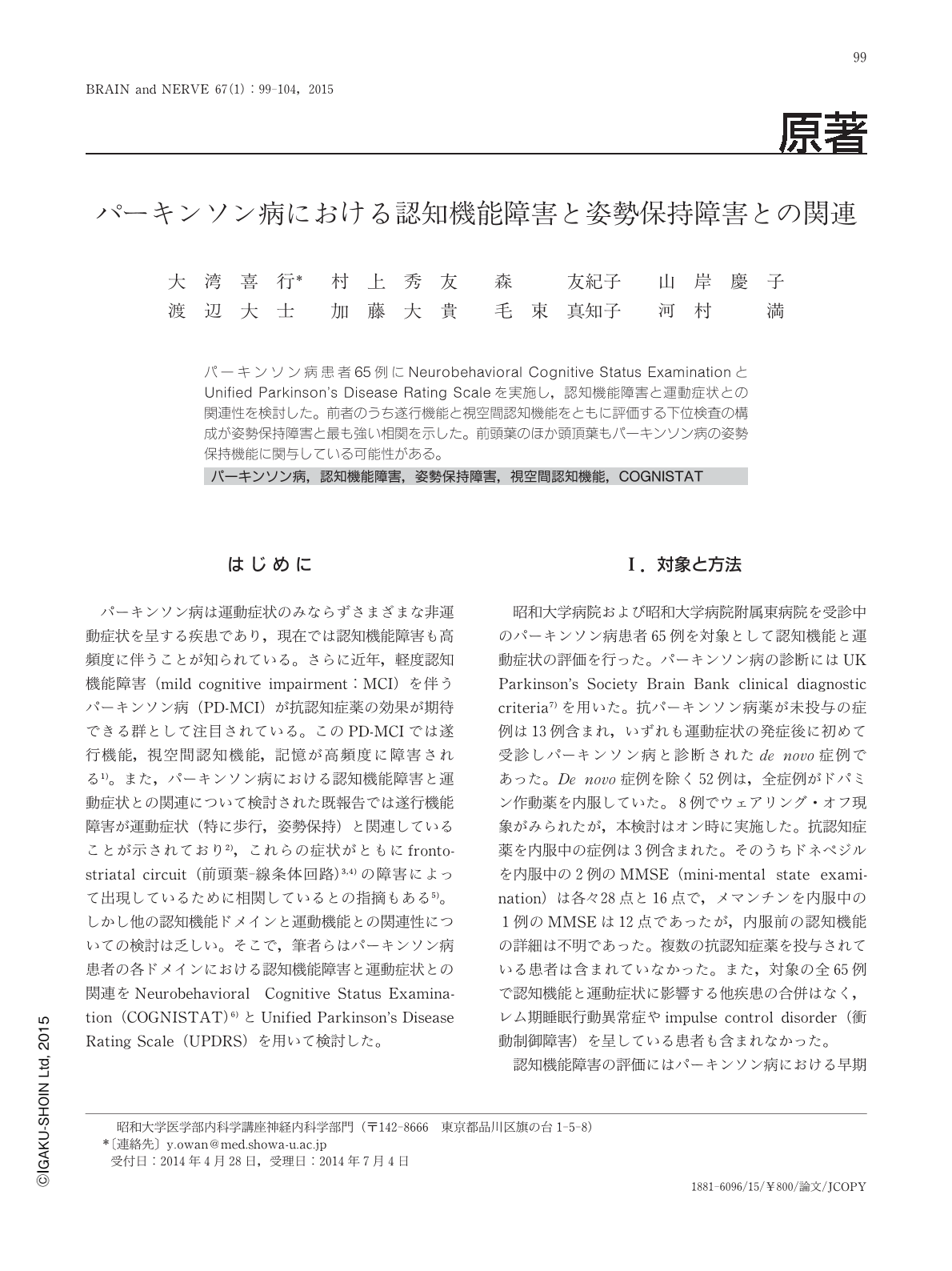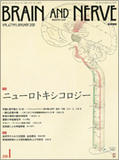Japanese
English
- 有料閲覧
- Abstract 文献概要
- 1ページ目 Look Inside
- 参考文献 Reference
パーキンソン病患者65例にNeurobehavioral Cognitive Status ExaminationとUnified Parkinson's Disease Rating Scaleを実施し,認知機能障害と運動症状との関連性を検討した。前者のうち遂行機能と視空間認知機能をともに評価する下位検査の構成が姿勢保持障害と最も強い相関を示した。前頭葉のほか頭頂葉もパーキンソン病の姿勢保持機能に関与している可能性がある。
Abstract
Correlation between frontal-executive function and motor functions, such as gait and postural control, has attracted attention in Parkinson's disease (PD). However, correlations between other cognitive functional domains and motor functions have not been examined. Thus, we examined the correlation between different domains of cognitive function and motor functions. Sixty-five PD patients were recruited for the present study. Cognitive functions were assessed by the 10 subtests of the Neurobehavioral Cognitive Status Examination (COGNISTAT). Motor functions were assessed by the Unified Parkinson's Disease Rating Scale (UPDRS) as partIII for general motor function and sum of related items for tremor, rigidity, bradykinesia, and postural instability. Spearman's correlation coefficients between each cognitive and motor assessment were compared.
Among the 10 subtests of the COGNISTAT, constructions showed significant correlation with UPDRS partIII (p<0.01), bradykinesia (p<0.01), and postural instability (p<0.001). The latter correlation was stronger than those between all motor assessments and both all patients backgrounds and other COGNISTAT subtests.
In PD patients, postural instability correlates with not only frontal executive dysfunctions but also parietal dysfunctions, such as visuospatial and constructive impairments. The postural maintenance system is suggested to share common physiology with not only frontal-executive function but also parietal functions.
(Received April 28, 2014; Accepted July 4, 2014; Published January 1 2015)

Copyright © 2015, Igaku-Shoin Ltd. All rights reserved.


